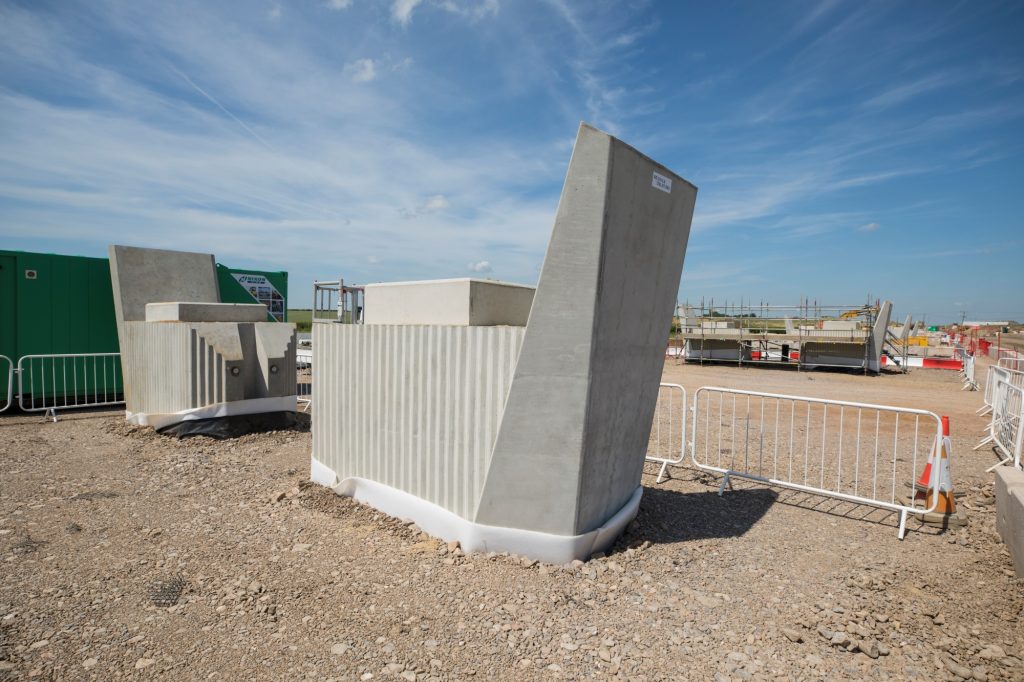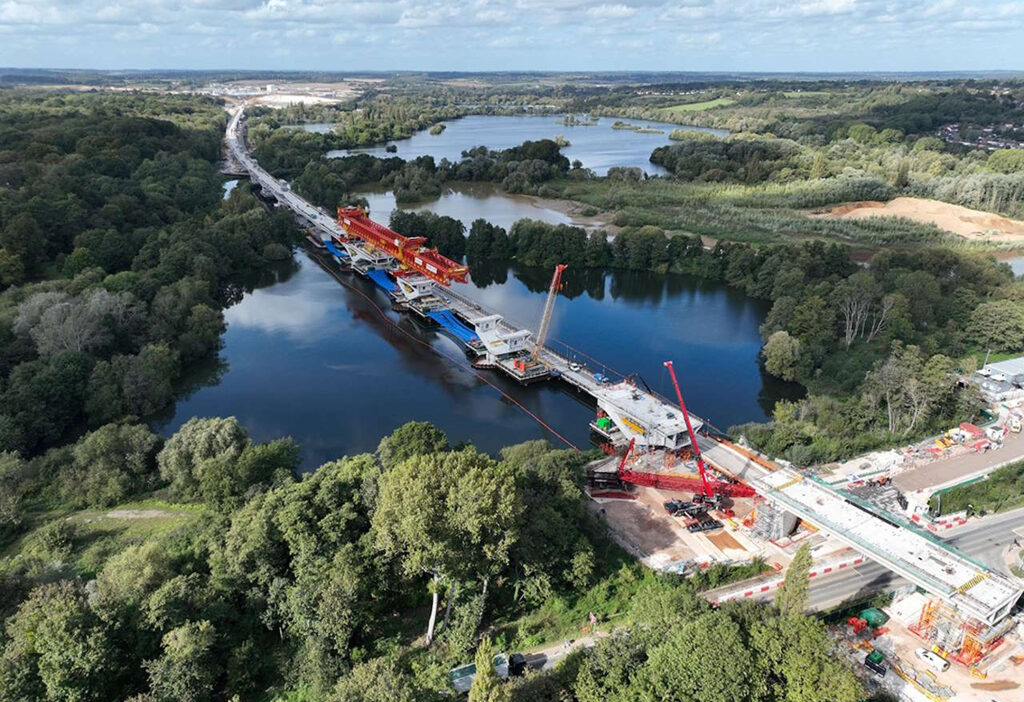HS2 | Assembly commences on UK’s first major rail viaduct manufactured off-site

This post was originally published on this site

Engineers have started assembling High Speed 2’s (HS2’s) Thame Valley Viaduct, which is the first major rail viaduct in the UK to have been manufactured off-site.
The Thame Valley Viaduct will be 880m long and carry the high speed rail line across the flood plain of the River Thame, just outside Aylesbury.
Every major element of the viaduct is being manufactured in Pacadar UK’s factory on the Isle of Grain in Kent and is being assembled on site by engineers from EKFB, which is a joint venture formed by Eiffage, Kier, Ferrovial and Bam. HS2 has said that this method for the viaduct will result in a carbon reduction of around a third compared to building the same viaduct in a more traditional manner.
The assembly process has been likened to a “giant Lego set”, though these pieces weigh 42t each. There will be 68 of these giant concrete piers in total and 14 have already been lifted into position on top of their foundations in the last month.
Thame Valley Viaduct is designed with a simple and consistent profile that lets it blend into the landscape, sitting just 3m above the ground. It will comprise 36 even spans as it traverses the river and surrounding wetlands.
Taking cues from recent high speed rail projects in Spain, each span on the viaduct has two 25m long hollow beams. Whereas traditional viaducts have their beams secured together above the piers with a concrete diaphragm that is cast in situ, the Thame Valley Viaduct’s larger precast beams can be secured directly to one another. This removes the need for a diaphragm and allows every major element to be prefabricated.
In this way, the work on site is simplified, lorry journeys are reduced and the amount of carbon-intensive concrete and steel is slashed. Safety is also improved as there is less need for people to work at height.
EKFB designed the viaduct alongside specialist on-site construction partner FC Civils Solutions.
HS2 Ltd head of civil structures Tomas Garcia said: “Thame Valley may not be HS2’s biggest viaduct, but it does represent a major step forward in terms of its structural design. The post-tensioned double-beam approach used here has enabled the whole viaduct to be manufactured off-site – dramatically improving efficiency, safety and quality while delivering outstanding performance and durability.
“Once complete, HS2 will offer zero carbon journey across the UK, but structures like this will also help us develop new ways to cut embedded carbon in construction that can be adopted across the rest of the industry in the future. That’s why it’s great to see the first piers in place as our construction partners begin to assemble this ground-breaking viaduct.”
FC Civils Solutions head of operations Tiago Palas said: “The construction team is thrilled with progress made so far. In a short amount of time, we have successfully installed fourteen pre-fabricated piers as well as pressing ahead with the other stages of works, on-and-off site, such as pile cap construction and the production of the precast beams ready for installation in autumn.
“Slotting the piers into place takes precision, collaboration and the expertise of the team, however, it’s a relatively quick process – an efficiency enabled by its innovative design and construction methodology.”
Elsewhere on HS2, Align JV (Bouygues, VolkerFitzpatrick, Sir Robert McAlpine) is constructing the Colne Valley Viaduct – the UK’s longest railway viaduct – through a modular method, but with the pieces manufactured on site and assembled with the use of an enormous launching girder.
Like what you’ve read? To receive New Civil Engineer’s daily and weekly newsletters click here.




Responses